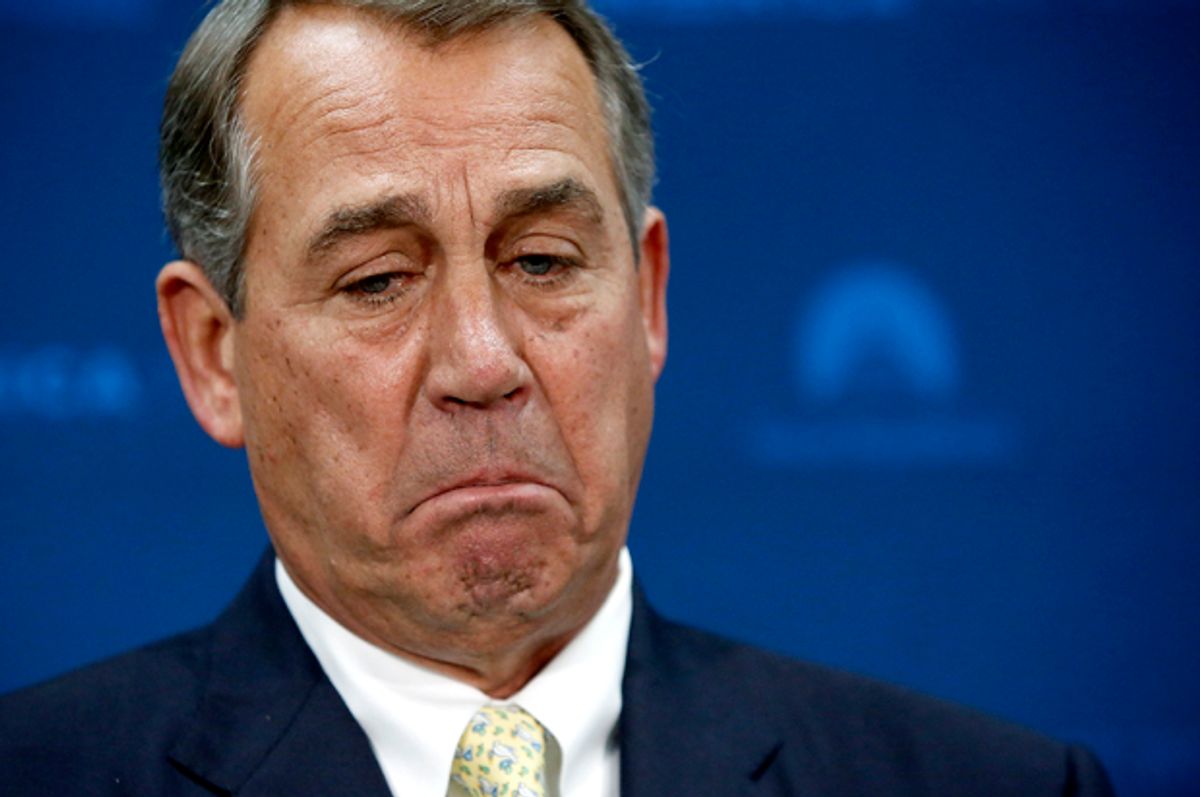The Pacific Northwest is burning, but federal lawmakers have done nothing help. Together, California, Oregon, and Washington are in the midst of their worst wildfire season ever, yet Congress failed to fund firefighting efforts before its August recess and has yet to vote on such legislation since returning.
Washington is experiencing one of its most destructive wildfire seasons in its history, with more than 550 square miles of land scorched, with more still to come. The state’s Department of Natural Resources announced that hundreds of homes and other structures have also been taken by the fires. The state’s Governor, Jay Inslee (D) says that more than 300 people have been displaced by the fire in July’s huge Carlton Complex wildfire and is asking the federal government for assistance for them.
To the south, three large, uncontained wildfires are burning in southern Oregon with heavy winds and low humidity expected for this weekend. The largest of the three, the Deception/Stately complex, located between Oakridge and Eugene, has scorched some 37,000 acres, but is now more than 50 percent contained. The other two fires have burned some 3,700 acres, but have yet to be significantly contained.
Another string of wildfires in California is threatening more than 100 homes in Shasta County, and many homeowners have left under a mandatory evacuation. The fire has scorched about 2 square miles of land and is 15 percent contained as of yesterday afternoon. And in Siskiyou County also in Northern California, the state’s largest wildfire, the Happy Camp Complex, continues to burn. It has destroyed more than 105,000 acres and is now only 30% contained. Another large blaze in Yosemite National Park near Half Dome Rock seems to be under control after destroying just under 8 square miles. Last week, 40 hikers had to be airlifted to safety from the area. East of Yosemite, yet another fire has burned 300 acres and is now under control.
An unusually destructive wildfire season in the West is predicted to continue amid drought-like conditions, low humidity and warmer than average weather.
In August, Congress returned home for summer vacation, failing to act on emergency funding to combat the wildfires that have raged this year. President Obama had requested $615 million in emergency funding to help the U.S. Forest Service and Interior Department pay for firefighting efforts, and the Democratic-controlled Senate proposed a $2.7 billion spending bill to deal with both the wildfires and the influx of unaccompanied minors along the Southwest border. But Senate Republicans used a procedural objection to block its consideration.The House did not introduce a bill to combat wildfires.
Ironically, without emergency funding from Congress, the Forest Service and Interior Department will need to transfer money from elsewhere in their budgets, including funds earmarked to remove flammable vegetation from forests, projects that help prevent such fires from raging in the first place.
The two federal agencies have budgeted over $1 billion for firefighting this year — five times more than 20 years ago — but that may not be enough for this year. Moreover, the U.S. Forest Service predicts that with climate change and a longer wildfire season, forest fires will increase 100 percent in western states by 2050.
NASA satellite imagery drives home the message of the fires’ severity. Vast plumes of smoke are moving south and east across the nation, spewing ash particulates as far away as New England and the Gulf of Mexico.
After a mild, damp spring, much of the Pacific Northwest has been experiencing a heat wave this summer, with temperatures reaching past 100 degrees. But it was the lightning and high winds associated with thunderstorms that have breathed the fires to life, according to fire officials.
Fires in high-elevation timberlines, where there are few homes and people, are being allowed to burn as firefighters concentrate on the ones that are more threatening to civilization.
Worrisome during this fire season is California, which is very susceptible to wildfires. The entire state has been under drought conditions for months, with most areas under “exceptional” or “extreme” drought conditions. Powerful Santa Ana winds have helped make conditions ideal for wildfires since January. It’s the first time in 15 years that all California has been under drought conditions.




Shares